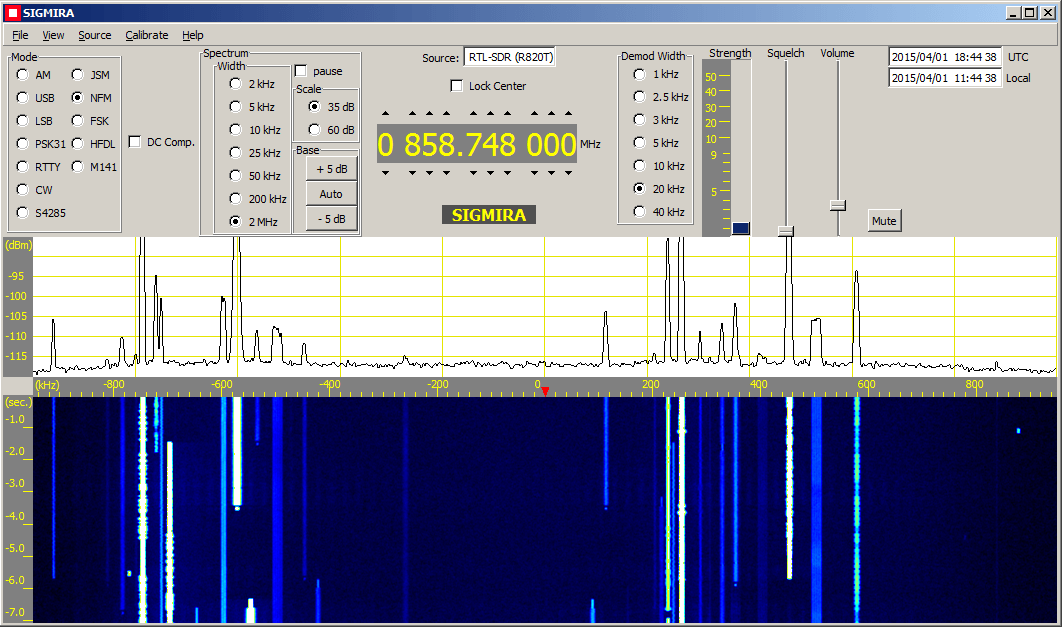Ais Decoding Software

Instructions 1 Download package or use precompiled 2 Untar and build tar zxvf aisdecoder-1.0.0.tar.gz cd aisdecoder-1.0.0 mkdir build cd build cmake./ -DCMAKE_BUILD_TYPE=RELEASE make NOTE! Windows build is tested with MinGW only! 3 Execute aisdecoder without any parameters to see help messages. Manual Sommerkamp Ft 767 Dx Engineering. /aisdecoder Output help messages: -h Destination host or IP address -p Destination UDP port -a Audio driver [pulse,alsa,file] -D ALSA input device. Use '-D list' to see all available system devices. -c Sound channels [stereo,mono,left,right] (default stereo) -f Full path to 48kHz raw audio file -l Log sound levels to console (stderr) -d Log NMEA sentences to console (stderr) -H Display this help Usage:./aisdecoder -h hostname -p port -a pulse,alsa,file [-f /path/file.raw] [-l] 4 Plug in your sound cable and calibrate the sound level by using -l The optimum level is 50-70% 5 Example: Decodes AIS data using Pulse Audio driver and streams NMEA to localhost UDP port 12345./aisdecoder -hlocalhost -p12345 -apulse • • • • •.
The decoder will decode all the NMEA VDM or VDO content of all 27 AIS message types including!AIVDM,!BSVDM and!ABVDM, The decoder has been tested on an XP PC, and believe it should work on all Windows PC's after 98. Other users report it works on Vista, Win 7, Win 7-64, Win 8, Win 8.1 and Linux (Wine).
AISMon is a freeware demodulator/decoder which outputs AIS-data in NMEA format. Data input may be from any installed sound card (radio. AIS Protocol Decoding - Download as PDF File (.pdf), Text File. Offering a Linux port in source of its software for collecting and forwarding AIS data. AIS Decoder is an AIS-data forwarding utility (developed by Neal Arundale) which can be used if you own an AIS receiver with a serial.
Lower Manhattan Immingham UK Docks Introduction Ais Decoder accepts AIS data from an AIS Receiver, the Internet or a Local Network connection, decodes the data and presents the decoded data in a form suitable for display and analysis by mapping program (eg Google Earth or Google Maps), or for analysis using Excel, or by a database (eg MySql). Main Features Input: Serial or USB from AIS receiver, UDP or TCP from network, Log File Input Filter: AIS Message type, DAC, FI, ID, MMSI Output: Display, File, FTP, UDP Output Frequency As received or at Scheduled intervals Output Filter: Lat/Lon or any other decoded field Output Formats: Text, CSV, HTML, XML, KML, KMZ, NMEA Self-extracting installation file, including help PDF Help Manual AIS AIS is primarily transmitted by ships for collision avoidance.
Ships over 200 tons must carry an AIS transponder which both transmits and receives AIS data, enabling vessels to see the speed and course (and other information) of vessels within around 20 miles of one another. It is also used by the Coast Guard and port authorities to monitor vessel movements. Other uses are becoming more common, such as Virtual Navigation Aids, weather and sea state reporting, control of inland waterways such as canals and locks. Anyone with a suitable receiver can receive this data.





